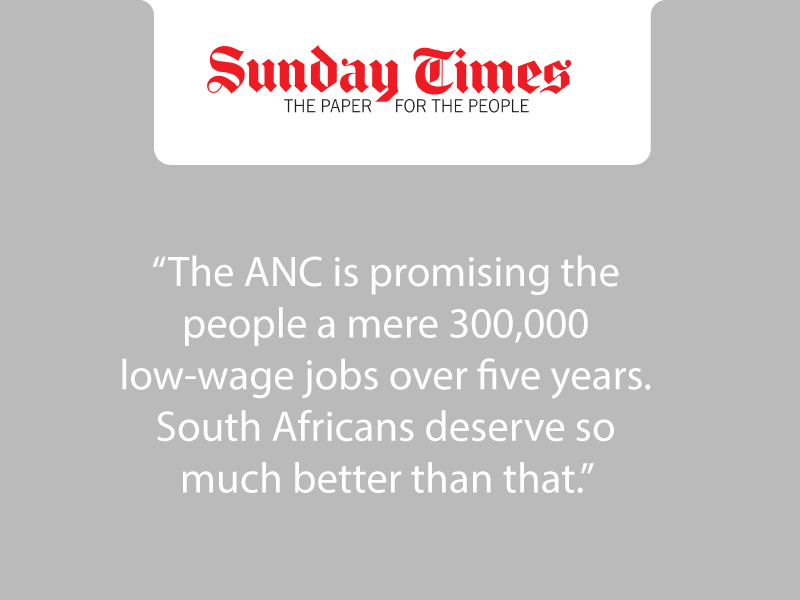
MEXICO has embarked on what The Economist called one of the “most ambitious reform programmes in the world today”. Can SA learn anything from this middle-income developing country on the US border? The opportunity to do so emerged recently, when Mexican Secretary of Foreign Affairs José Antonio Meade Kuribreña spoke at a dinner co-hosted by the Centre for Development and Enterprise (CDE) and the Mexican embassy.
Since Mexico became part of the North American Free Trade Agreement, it has become remarkably export oriented. Trade as a percentage of gross domestic product (GDP) is more than 60%, compared with Brazil at 21%, India at 42%, SA at 55% and China at 47%.
Mexico is now one of the top three exporters in the Group of 20 (G-20), measured as a percentage of GDP. The country is rich in energy and is an important producer of oil but commodities constitute just less than 20% of exports. The remaining 80% are manufactured goods. Mexico’s hi-tech manufacturing measured as a percentage of GDP is in the top five of G-20 countries.
Unspectacular but consistent growth in a reformed and diversifying economy has allowed rapid expansion of Mexico’s middle class. About 50% of Mexicans (about 60-million people) can now be considered middle class, with a shrinking proportion working in the public sector compared with previous decades. The border region with the US is now the fourth-largest economy in the world. Mexico is becoming not just a place to locate factories so they can hire cheap labour, but also a vital market for the US as Mexican middle-class consumers expand. The country’s economy has matured and diversified; 90% of exports to the US are now manufactured goods.
Kuribreña explained that there had been a long and growing sense of frustration in Mexico that, despite the opening up of the economy, desultory economic growth never got much above 2%. At that rate Mexico was able to double its real income over 35 years, but the resulting changes were too incremental to satisfy most people. When Enrique Peña Nieto of the Institutional Revolutionary Party won the presidential election in 2012, he was determined to push through reforms he believed were the only way to change Mexico’s long-term growth performance.
In Kuribreña’s words: “In the current context, Mexico’s growth performance had become increasingly difficult. There was no real space to use fiscal spending to stimulate growth and a number of European countries have shown what happens if countries abuse fiscal tools to generate growth. Monetary policy is already loose and cannot be loosened further to stimulate growth. It became clear to the Mexican government that if we wanted to find additional sources of growth, the only way was to undertake a very aggressive programme of structural reforms.”
Before he took office, President Peña Nieto sat down with the major opposition parties and discussed his ideas for reform. He realised that, while there were many areas of disagreement, there was a broad consensus on what the items of the discussion should be. Intensive negotiation allowed politicians to achieve agreement on many reform initiatives and the Pact for Mexico emerged — a package of reforms covering areas as diverse as privatisation of energy (long seen as an untouchable area of national pride), education and labour market reform.
For example, while some of the reforms attack lack of transparency within labour unions and seek to make labour markets more flexible, others strengthen workers’ access to unemployment insurance and state pensions. In the area of tax reform some politicians made their support for expanding VAT to nonessential food and medicines conditional on the president’s support for assistance programmes for lower-income families. By combining the reforms into a package, Nieto succeeded in building a broad coalition that supports the reform process as a whole.
The Mexican energy sector was more tightly regulated and closed than Cuba’s, for example. Reforms now allow Mexico to acquire investments and technology through licensing agreements with foreign companies. The telecommunications sector is being similarly opened up: a powerful regulator has been created and the dominant monopoly is voluntarily selling off some of its assets.
Teaching jobs had come to be seen as the endowment of teachers’ unions with little incentive for teachers to enhance their teaching capabilities. Nieto’s reforms have tackled corruption within unions, made the administration of education autonomous from union interference, introduced teacher and school evaluations and promoted teacher professionalisation.
Membership is compulsory in many unions, but these unions were not obligated to demonstrate that they used membership dues in the interests of members. Unions are now far more accountable and their financial dealings more transparent.
Flexibility in the hiring and firing of labour within specific types of contracts has been introduced. Mexican firms can now hire workers who are in training for a specific period — either three or six months. At the end of the training period, if employers do not want to hire workers permanently, they can terminate their contracts without having to pay any severance. Continuous contracts for seasonal workers are also now allowed.
According to Kuribreña, once these reforms were implemented, the Mexican labour market performed well, and the rate at which formal jobs are being created now exceeds the rate at which the economy has grown. In September 2013, Mexico was able to create 185,000 jobs in one month, the third-best month in its history.
The Mexican story has interesting pointers for SA as we contemplate another year of very low growth. Political leaders developed a strategy for how to build a political coalition of diverse interests behind crucial reforms. The adoption of a package of reforms enabled different political groups to achieve something for their supporters in some parts of the reform package while not being enthusiastic about other aspects. It is frequently the case that reformers fail to deliver results because they avoid the most controversial but important issues. In the case of the Pact for Mexico, this was not what happened.
It is still early days for the Pact for Mexico and the president is under considerable pressure: economic growth has yet to increase significantly, criminal activity continues, and he is personally under attack for what appear to be dubious business dealings, after his wife bought a house from a businessman whose company has benefited from his presidency.
India, under Prime Minister Narendra Modi, and Mexico are now two of the most important places in the developing world for those interested in economic reform. SA has a vital interest in the progress of these leaders and their ambitious reform goals. If we want to turn SA around, protect our constitution and achieve the higher growth rates so essential for this democracy, fundamental reforms are urgently necessary. For that to happen, we need leadership committed to implementing fundamental reforms. We can draw inspiration from what is being attempted in other developing democracies, which provide important pointers for this country.
create pages




